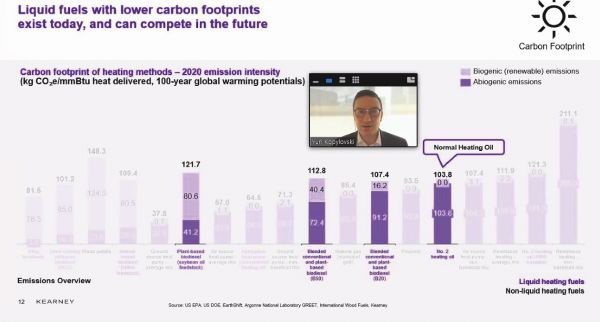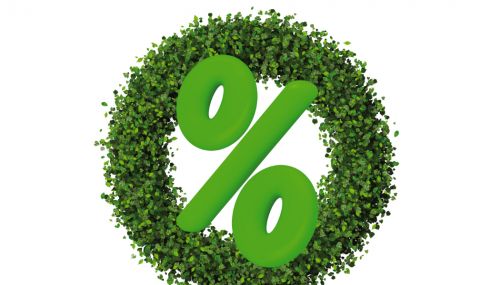All
The Road to Net-Zero Continues

World-renowned energy analysts affirm viability of Providence Resolution
“We started this project tasked with answering the question around the Providence Resolution: fundamentally, was it feasible? Can your industry realistically expect to achieve a net-zero carbon future by 2050?” That was Neal Walters, a partner at global management consultancy A.T. Kearney, in his closing remarks of “Industry Summit II: Implementing the Road to Net-Zero,” the final presentation given at the 2020 Virtual HEAT Show.
Having advised many of the biggest governments around the world and three-fourths of the Fortune 500 list, Kearney is regarded as one of the world’s foremost consulting partnerships in the energy space, with expertise in upstream and downstream oil and gas, renewables, power generation and various other segments. After last year’s inaugural HEAT Show, NEFI brought in Kearney to work with the association’s industry taskforces on a plan to achieve the goals of the Providence Resolution.
“When we joined the NEFI team a few months ago, the jury was very much still out on that question,” Walters continued. “We spent a significant amount of time poring over the data, interviewing many stakeholders, developing, testing, refining the content we’ve presented to you today. We came to the conclusion that yes, successfully achieving the goals laid out in the Providence Resolution is achievable. That’s the reality.”
How do we do it? That’s what Kearney was brought in to help industry stakeholders figure out, and that’s what the day’s presentation was all about. This article relays some of the Industry Summit’s key takeaways, with additional insights that were shared during Kearney’s presentation. As summit moderator Charlie Uglietto of Cubby Oil & Energy noted at the start of his own closing remarks, “Keep in mind, this is a very high-level summary, there is a ton of data to support each and every conclusion, and that data is available to be deployed as soon as we need to.”
To stream the full Industry Summit and/or request additional information, visit https://www.heatshow.com/.

B20 By 2023, B50 By 2030, 100% Renewable Fuel By 2050
At the very highest level, the answer to the question of “how” is the solution that’s been tossed around industry circles for at least a year now. The industry can achieve the goals of the Providence Resolution (15 percent carbon reductions by 2023, 40 percent reductions by 2030 and net-zero by 2050) by adopting a B20 Bioheat® fuel blend by 2023, B50 by 2030, and 100 percent renewable liquid heating fuel by 2050.
We’ve said this to each other time and again, but on September 23, 2020 we finally began to tell the world. A press release issued immediately after the summit carried the headline, “Heating Oil Industry Plans to Eliminate Fossil Energy” and broadly outlined what the Industry Summit made clear, that biofuel blending provides the most affordable and immediate path to net-zero carbon for the home heating sector.
The challenge of testing how Bioheat, biodiesel and other renewable fuels compare with heating oil was taken up by NEFI’s Heat Source Comparison taskforce, whose work was coordinated by Yuri Kopylovski, a manager at Kearney.
During the presentation, Kopylovski charted the carbon reductions enabled by blending heating oil with plant-based biodiesel. He showed that B20 Bioheat containing plant-based biodiesel reduces heating oil’s carbon footprint by 16.2 percent and B50 reduces it by 40.4 percent. While plant-based B100 achieves carbon reductions of 80.6 percent, used cooking-oil based B100 hits 85 percent reductions.
“To get to the ultimate 2050 goal of net-zero,” Kopylovski acknowledged, “the industry will need to take advantage of renewable liquid fuels that are already commercially available as well as develop others that are still in pilot stages of production.” The latter category includes ethyl levulinate (EL), which actually achieves net-negative emissions, as Kopylovski explained in a Q&A following the presentation.
Bioheat vs. Electrification
Of course, the industry’s transition to renewable liquid heating fuel is not just about how Bioheat compares with heating oil; equally important is how Bioheat compares with other heating methods like electric heat pumps.
The Technical Standards taskforce looked at the technical, safety and quality requirements for reaching the Providence Resolution objectives. Their findings confirmed that biofuel blending offers consumers in the Northeast a more direct path to net-zero carbon than electrification.
“Electric air source heat pumps claim to lower emissions and costs over time, but they have the highest cost to upgrade from an oil heat system and often require a supplemental heat source in very cold weather,” Kopylovski said. “They also rely on electricity that’s generated at peak usage times when the share of renewable electricity generation is relatively low and carbon emissions are higher than proponents often claim. In comparison, using B100 is cheaper to upgrade from an oil heat system, more efficient in cold climates, and has lower carbon emissions compared to the alternatives.”
Also supporting the transition to renewable liquid heating fuels, universal technical standards have already been adopted to allow for storage of up to B20 in aboveground tanks, and several equipment manufacturers have certified their appliances for use with these fuels (see the story on page 35 for one example).
Furthermore, the National Oilheat Research Alliance (NORA) is currently developing a fuel specification to cover B50 and higher blends. Indeed, NORA has conducted a great deal of research on Bioheat fuel’s performance and the ongoing transition to renewable liquid heating fuel, both of which helped to inform Kearney’s analysis (see “NORA Completes Study on Biofuel Transition” on page 40).
Supply Considerations & Policy Recommendations
“The supply and infrastructure story overall is an optimistic one,” Kopylovski said. Though there has been a great deal of concern and speculation around this area, Kearney’s research found that much if not all of the required supply, infrastructure and production capacity already exists.
“Today, the northeastern U.S. produces about 150 million gallons of biodiesel per year, and to get a B20 blend by 2023 we’ll need 800 million gallons per year,” Kopylovski said. “That might seem like a pretty big increase, but in 2019 North American production capacity was about 3 billion gallons, and only 1.7 billion gallons were actually produced.” The capacity figure accounted for biodiesel plants in the U.S. and Canada. “This means that with existing plant infrastructure, we have about a 73 percent increase in production that could be made without any additional capital investment or reliance on imports from outside North America.”
No discussion of North American biodiesel production and supply would be complete without also examining related policy considerations. Elena Rohner, a business analyst at Kearney, reviewed the findings of the industry’s policy taskforce.
“As a starting place, the working group developed a set of recommended state level and federal level policy priorities that create a level playing field and ensure there is a steady and reliable supply of B20 blends and higher for the wholesale supply market,” Rohner said.
Federal recommendations included increased support for heating oil blending under the Renewable Fuel Standard and Higher Blends Infrastructure Incentive Program. The policy group also recommended pursuing state adoption of B20 blending requirements and regional market-based incentive programs for higher blends. “This combo creates an even playing field for the wholesale distribution market, ensures supply from around the country, and encourages increased production in the Northeast,” Rohner said.
Hope & Urgency
At the close of the second annual Industry Summit, attendees came away with a combined sense of hope and urgency: hope for the opportunities that lie before them; urgency in the need to embrace these opportunities immediately. This was perhaps summarized best in Charlie Uglietto’s closing remarks. For serious industry stakeholders, his entire speech is required viewing. Here are just a few key excerpts:
“As an industry, we need a unified voice and a singular message to educate policymakers, consumers and all dealers that we have a very crucial role to play in the future low-carbon energy mix. We must clearly and succinctly communicate our ability to immediately reduce greenhouse gas emissions in the heating sector at little to no cost to consumers while helping policymakers achieve their goals. And we also have to let them know that we’re doing it already voluntarily. But the time to act is right now. There is no time left.
“A wholesale executive predicted to me that if we don’t act now within five years we will have lost 35 to 50 percent of our customer base. Is that an opinion? No. ISO-New England is predicting that they can convert 750,000 homes from fossil fuels to heat pumps within the next five years. The wholesale executive’s opinion was a fact. That’s a lot of customers to lose and a lot of gallons not to deliver. We’ve got to keep in mind that our competition is unified but more importantly, well funded. So now is the time we need to invest in our industry…
“Let’s just take a look at what’s happened in the last 12 months. Our industry has come together like never before. We have monthly phone calls with industry stakeholders throughout the country. We have wholesalers, equipment manufacturers, state associations, retailers, member associates all getting together discussing the potential for our industry and the challenges that we face. We have a great and important story to tell, but we have to do it now. Now is the time for the leading heating fuel retailers to embrace the future for this industry and do what they do best — lead.
“I certainly think that with the conclusions from Kearney and with the work that our industry has done, there’s only one path forward … I will do everything I can to support this industry moving forward and I’m sure all of you will too.”
Related Posts
 How to Set Your Business Apart with Renewable Propane
How to Set Your Business Apart with Renewable Propane
Posted on October 16, 2025
 EIA Report: Biodiesel and Renewable Diesel Imports Fall Sharply
EIA Report: Biodiesel and Renewable Diesel Imports Fall Sharply
Posted on October 16, 2025
 Northeast Liquid Fuel Providers Put Higher Bioblends in Focus
Northeast Liquid Fuel Providers Put Higher Bioblends in Focus
Posted on August 19, 2025
 Lower Carbon Lineup Puts Businesses on the Path to Net Zero Goals
Lower Carbon Lineup Puts Businesses on the Path to Net Zero Goals
Posted on August 18, 2025
Enter your email to receive important news and article updates.
